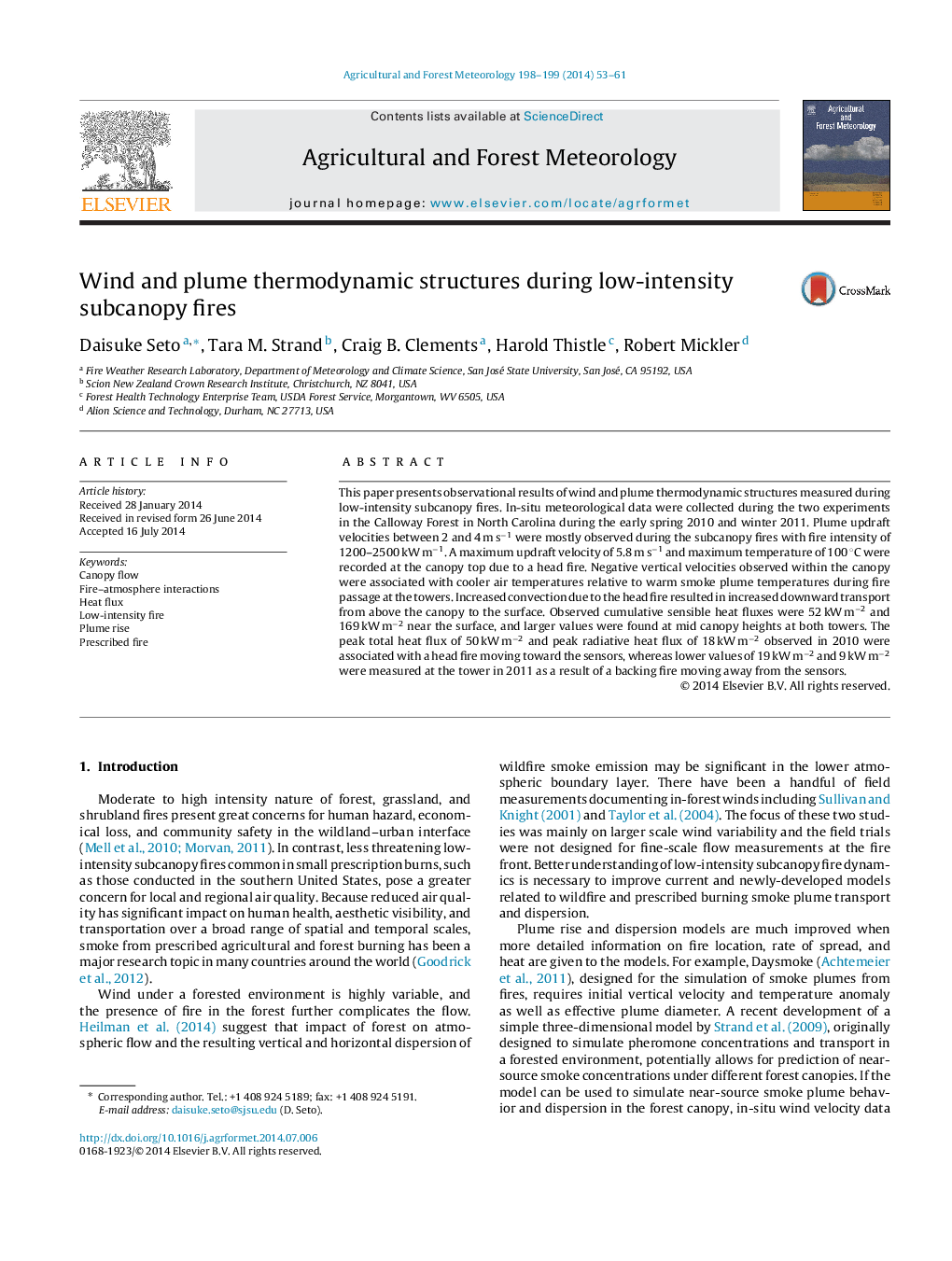| Article ID | Journal | Published Year | Pages | File Type |
|---|---|---|---|---|
| 6537501 | Agricultural and Forest Meteorology | 2014 | 9 Pages |
Abstract
This paper presents observational results of wind and plume thermodynamic structures measured during low-intensity subcanopy fires. In-situ meteorological data were collected during the two experiments in the Calloway Forest in North Carolina during the early spring 2010 and winter 2011. Plume updraft velocities between 2 and 4 m sâ1 were mostly observed during the subcanopy fires with fire intensity of 1200-2500 kW mâ1. A maximum updraft velocity of 5.8 m sâ1 and maximum temperature of 100 °C were recorded at the canopy top due to a head fire. Negative vertical velocities observed within the canopy were associated with cooler air temperatures relative to warm smoke plume temperatures during fire passage at the towers. Increased convection due to the head fire resulted in increased downward transport from above the canopy to the surface. Observed cumulative sensible heat fluxes were 52 kW mâ2 and 169 kW mâ2 near the surface, and larger values were found at mid canopy heights at both towers. The peak total heat flux of 50 kW mâ2 and peak radiative heat flux of 18 kW mâ2 observed in 2010 were associated with a head fire moving toward the sensors, whereas lower values of 19 kW mâ2 and 9 kW mâ2 were measured at the tower in 2011 as a result of a backing fire moving away from the sensors.
Related Topics
Physical Sciences and Engineering
Earth and Planetary Sciences
Atmospheric Science
Authors
Daisuke Seto, Tara M. Strand, Craig B. Clements, Harold Thistle, Robert Mickler,
